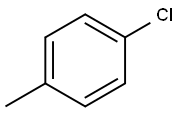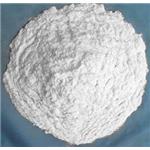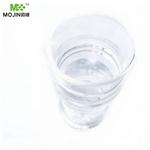Chemical Properties
Colorless oily liquid. Slightly soluble in water. Soluble in ethanol, ether, acetone, benzene and chloroform.
Uses
4-Chlorotoluene is used in a variety of organic synthesis, such as acting as coupling precursors for palladium-catalyzed acylation of acetanilides. It is also used for the preparation model gas of 4-chlorotoulene by passing synthesized air into liquid 4-chlorotoulene.
Application
4-chlorotoluene is used as a solvent and intermediate for dyes and other organic chemicals. It is used mainly to produce p-chlorobenzotrichloride, from whichis obtained p-chlorobenzotrifluoride, an important precursor of herbicides (e.g., trifluralin:α,α,α,-trifluoro-2,6-dinitro-N,Ndipropyl-p-toluidine). Other side-chain-chlorinated products or their derivatives are 4- chlorobenzyl chloride (for pharmaceuticals, rice herbicides, and pyrethrin insecticides), 4- chlorobenzaldehyde (for dyes and pharmaceuticals), 4-chlorobenzoyl chloride (for pharmaceuticals and peroxides), and 4-chlorobenzoic acid (for dyes). 4-Chlorotoluene is also a starting material in the synthesis of 2,4- and 3,4-dichlorotoluene and of 4-chlorobenzonitrile. [ChemicalBook]
Definition
ChEBI: 4-Chlorotoluene is a member of monochlorobenzenes. It is an intermediate for the manufacture of Fenvalerate, Paclobutrazol, Uniconazole, Trifluralin,Thiobencarb, Daimuron and other pesticides.
Preparation
4-Chlorotoluene is obtained from p-toluidine by diazotization and substitution. Add p-toluidine and hydrochloric acid to the reaction pot and stir and heat until dissolved at 60℃, then cool to below 15℃ and add sodium nitrite solution dropwise. After reaching the end point, continue to stir for 0.5h. Add cuprous chloride hydrochloric acid solution and stir at room temperature for 3h. Then raise the temperature to 60℃ and keep for 0.5h, cool to room temperature and leave to stratify, discard the acid water layer, wash with water to neutral, filter and get p-chlorotoluene.
General Description
The reaction of 4-chlorotouleneand phenylboronic acid with Pd(OAc)2/L?2HX as the catalyst is the model reaction for determining the efficiencies of bisimidazolylidene (L) ligand precursors.
Hazard
Avoid inhalation; strong irritant.
Flammability and Explosibility
Flammable
Safety Profile
Moderately toxic by
ingestion. Mdly toxic by inhalation.
Flammable when exposed to heat or flame.
When heated to decomposition it emits
toxic fumes of Cl-. See also TOLYL
CHLORIDE and CHLORINATED
HYDROCARBONS, AROMATIC.
Purification Methods
Dry it with BaO, fractionally distil it, then fractionally crystallise it by partial freezing. [Beilstein 5 IV 806.]






